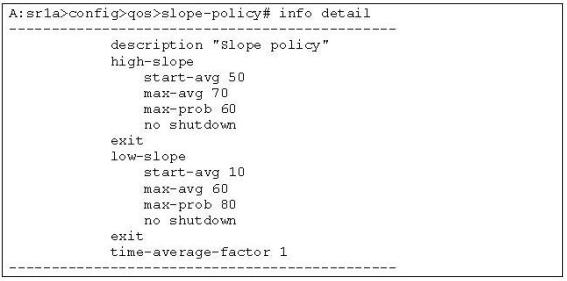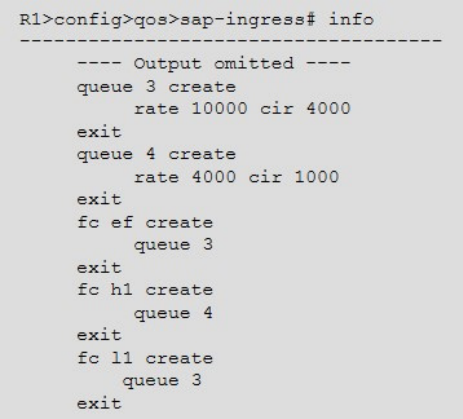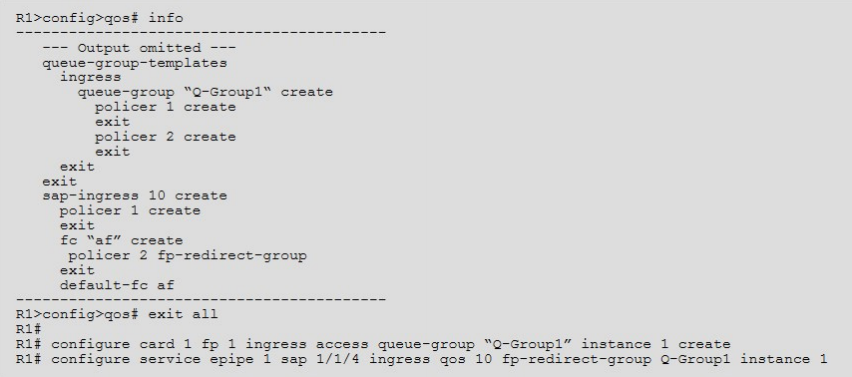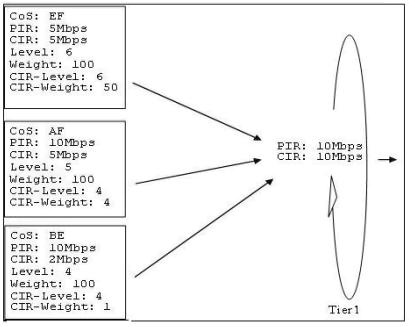Nokia 4A0-107 - Nokia Quality of Service
What type of unwanted packet drops can the proper configuration of a queue’s burst-limit parameter prevent?
Click the exhibit button below. Given the slope-policy (below), which of the following statements are TRUE? (Choose two)

An IOM3 card of a Nokia7750 SR is enabled with the default scheduler and the policy shown in the image is applied to an access port on this card. In which order will packets be scheduled out of the queues?

A default network policy is applied to all router interfaces associated with network ports.
Without_______, a customer's high priority traffic can be dropped before its low priority traffic.
According to the SAP-egress policy configured and applied, which queue will forwarding class AF’s traffic use?

Click the exhibit button below. Given the scheduler-policy (below), which of the following can be done to guarantee that the best-effort traffic receives its configured CIR value?

The IP ToS field consists of ________ bits, of which ________are used. The _________most significant (first) bits define precedence.
Which of the following statements regarding the default scheduler in the Nokia 7750 SR are TRUE? (Choose two)



